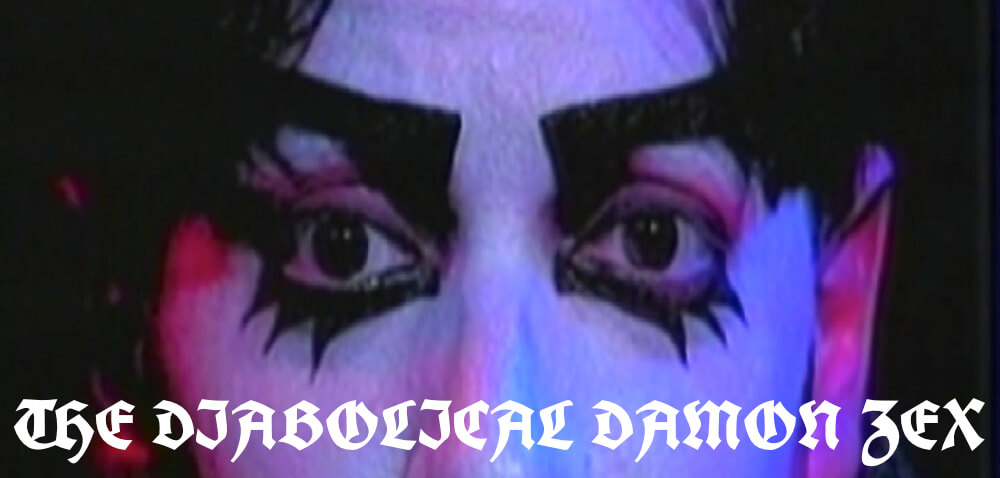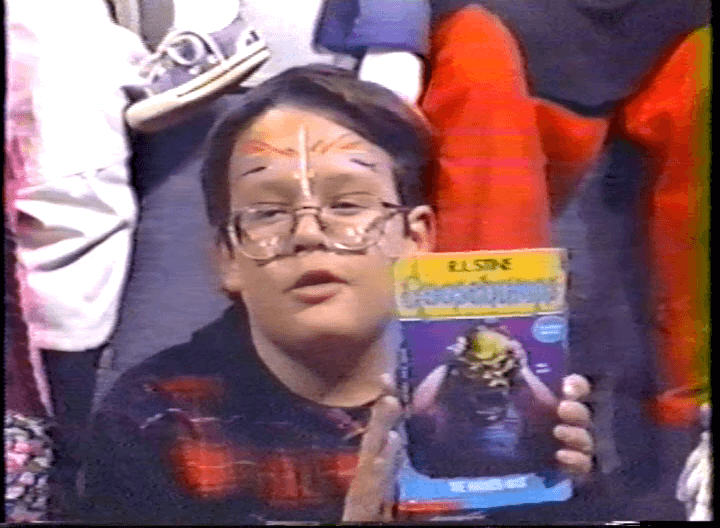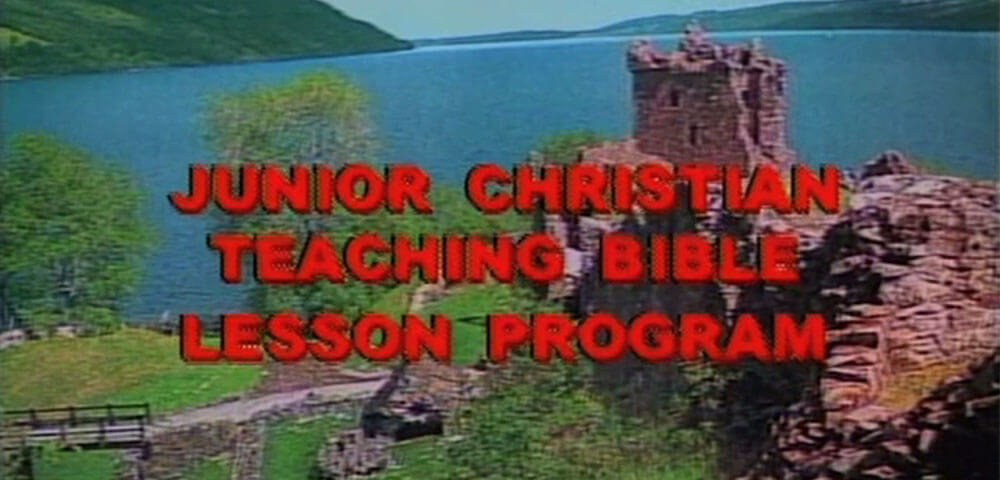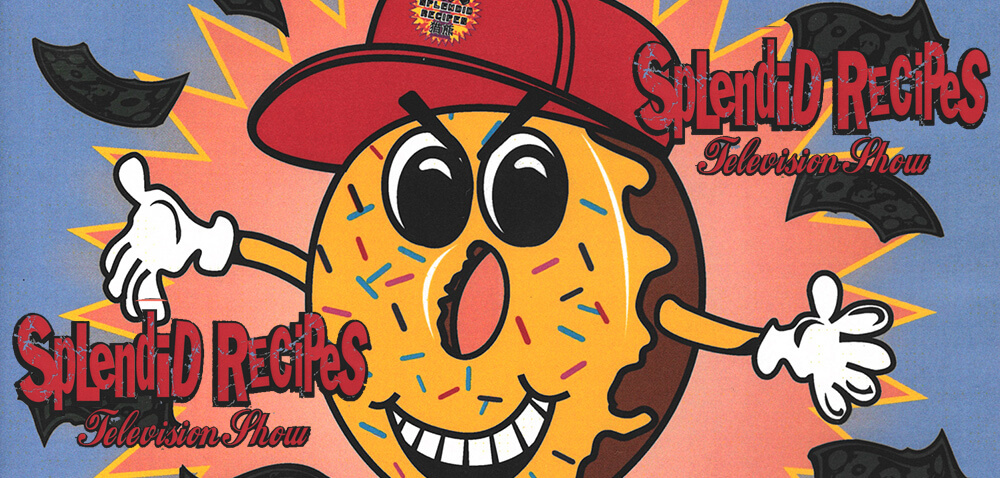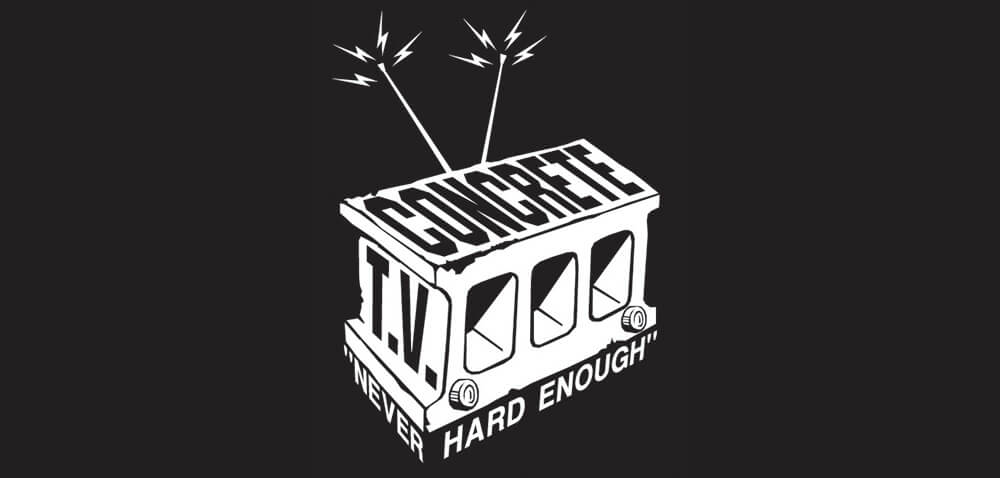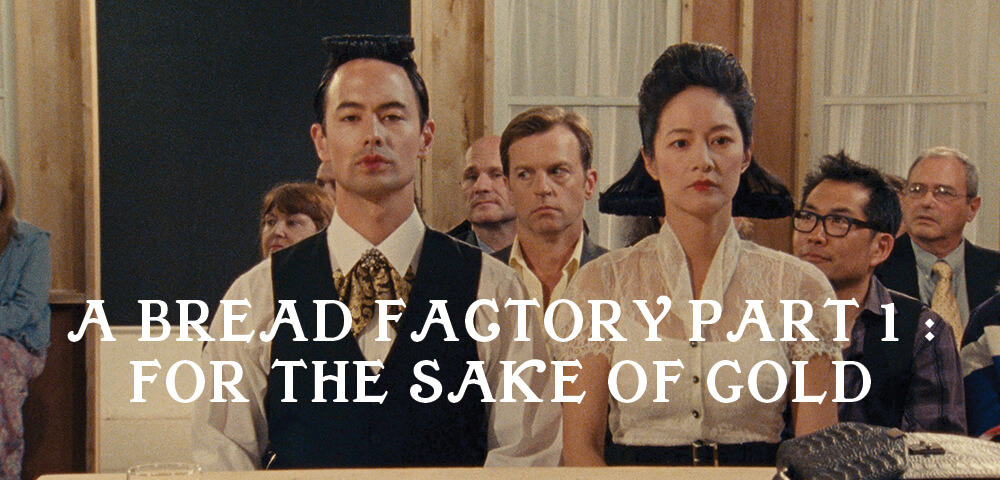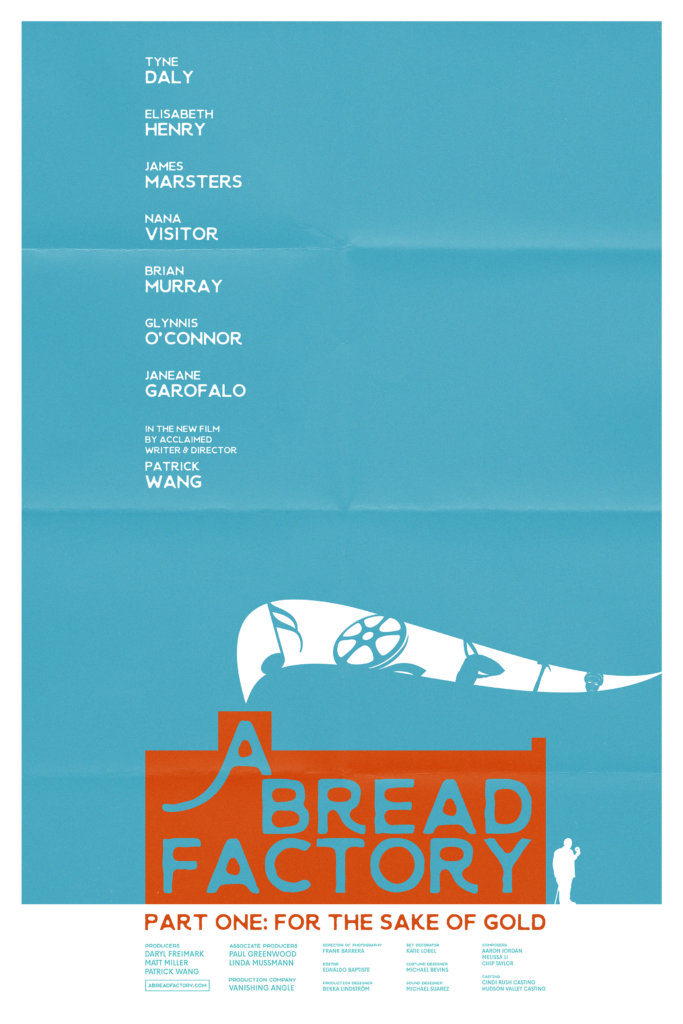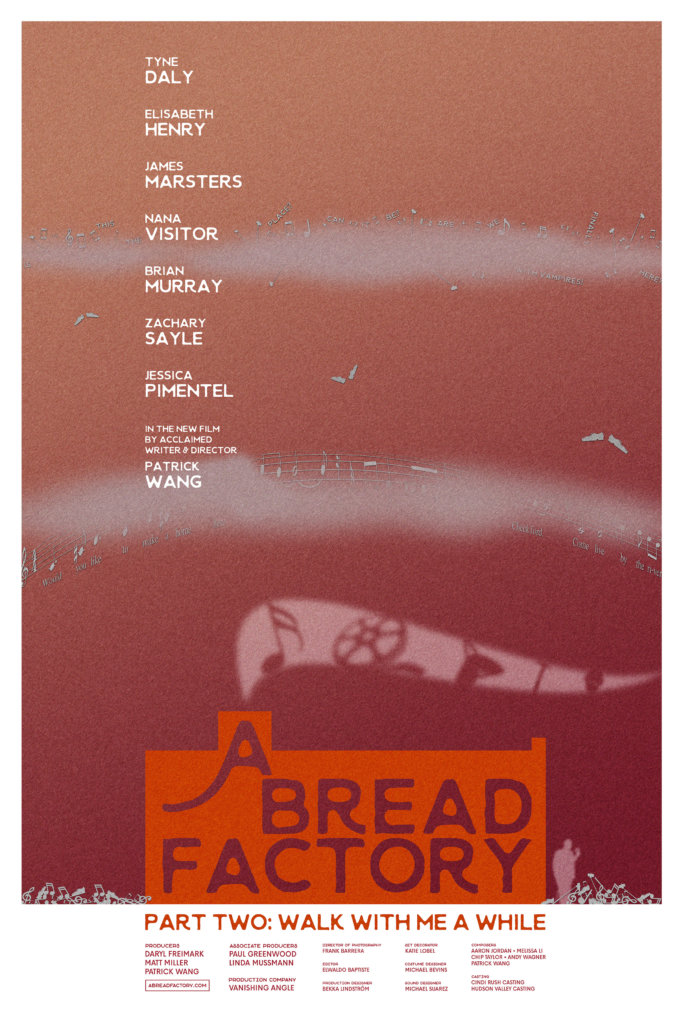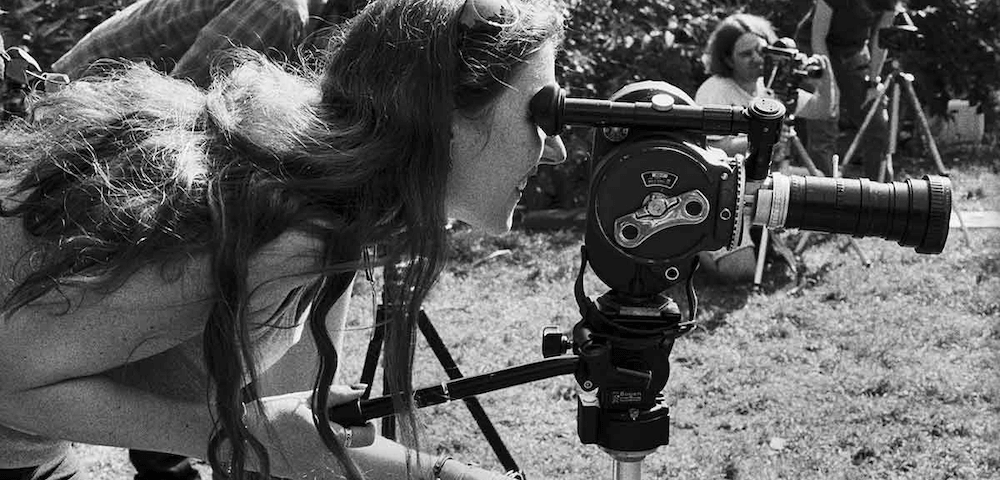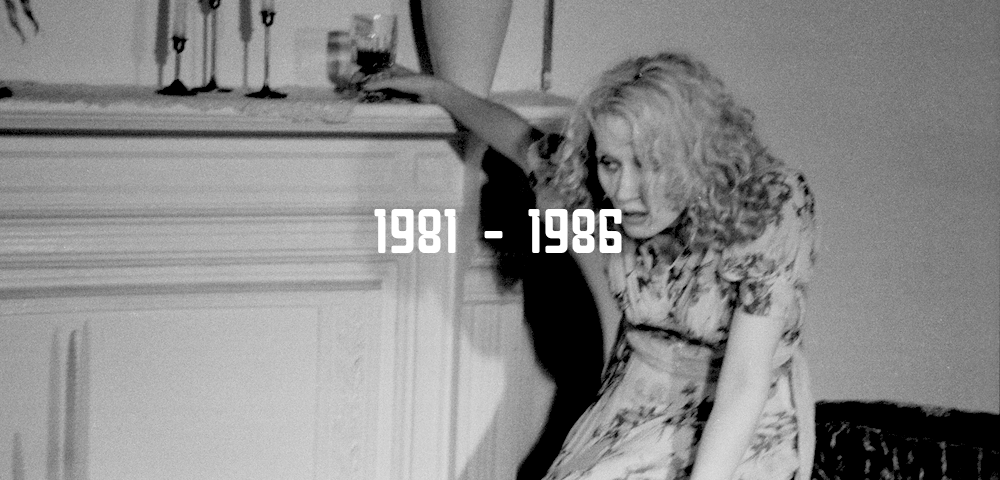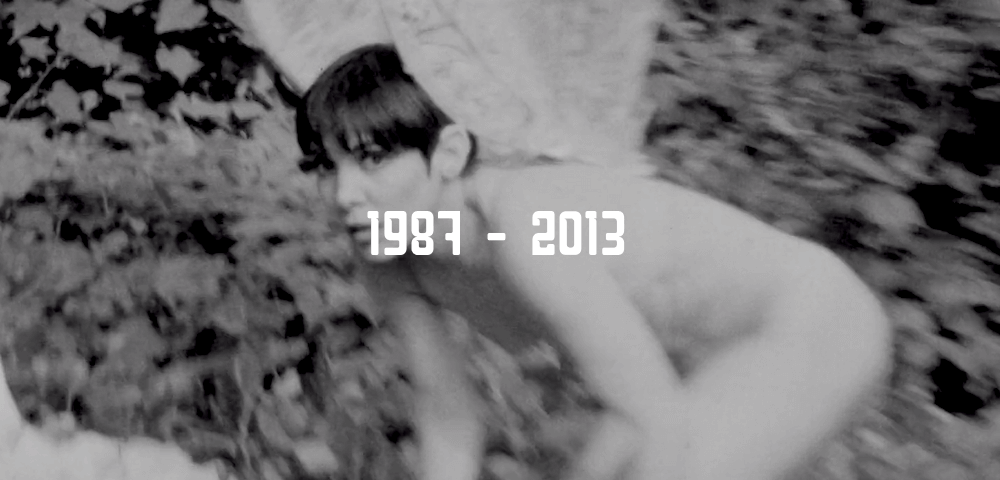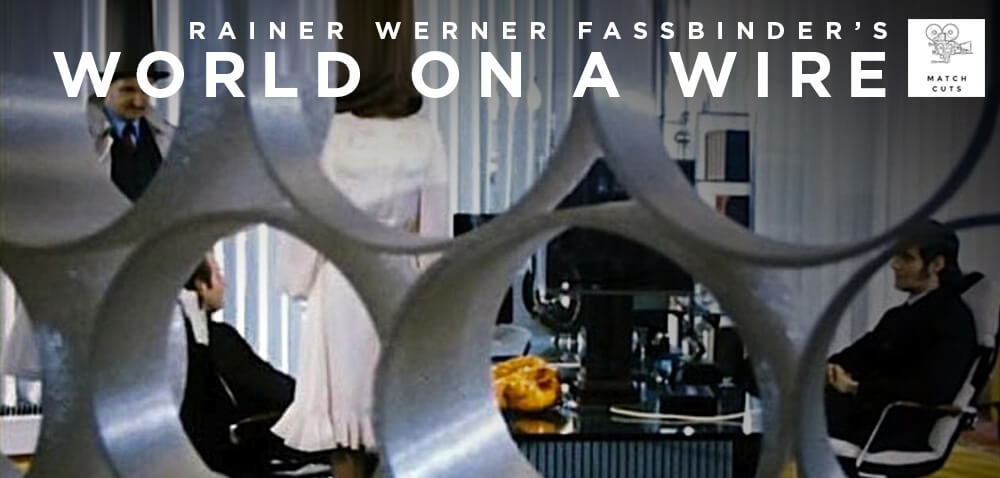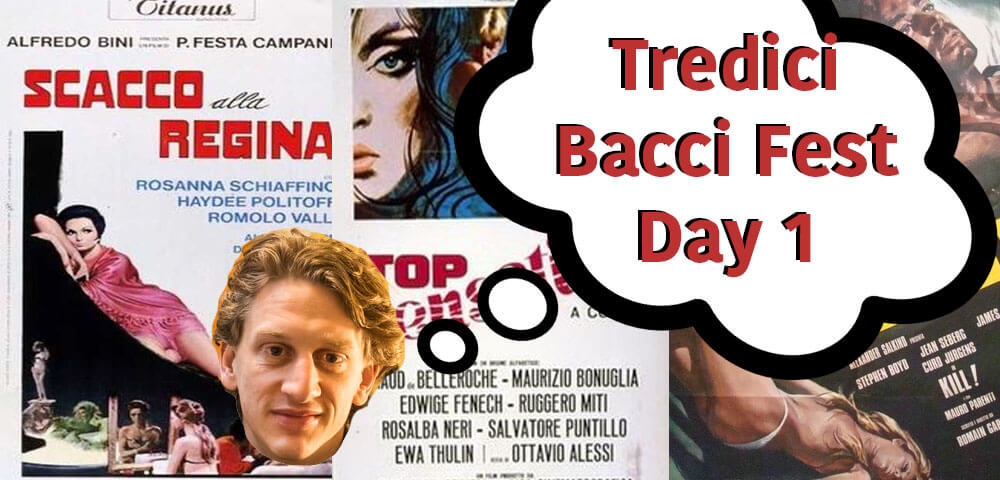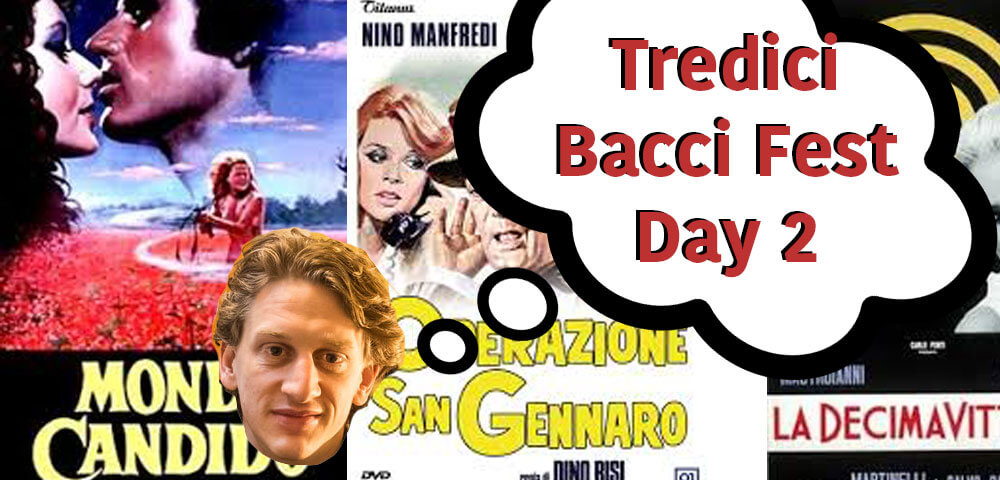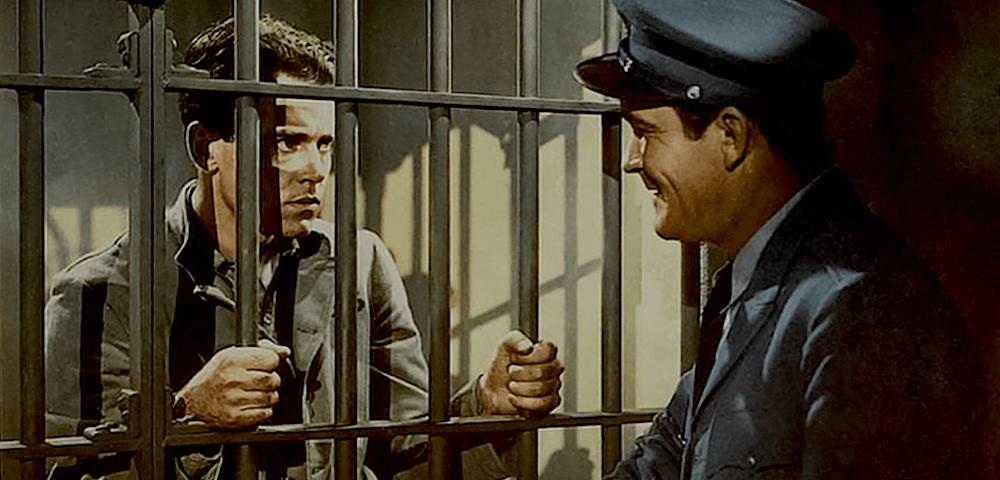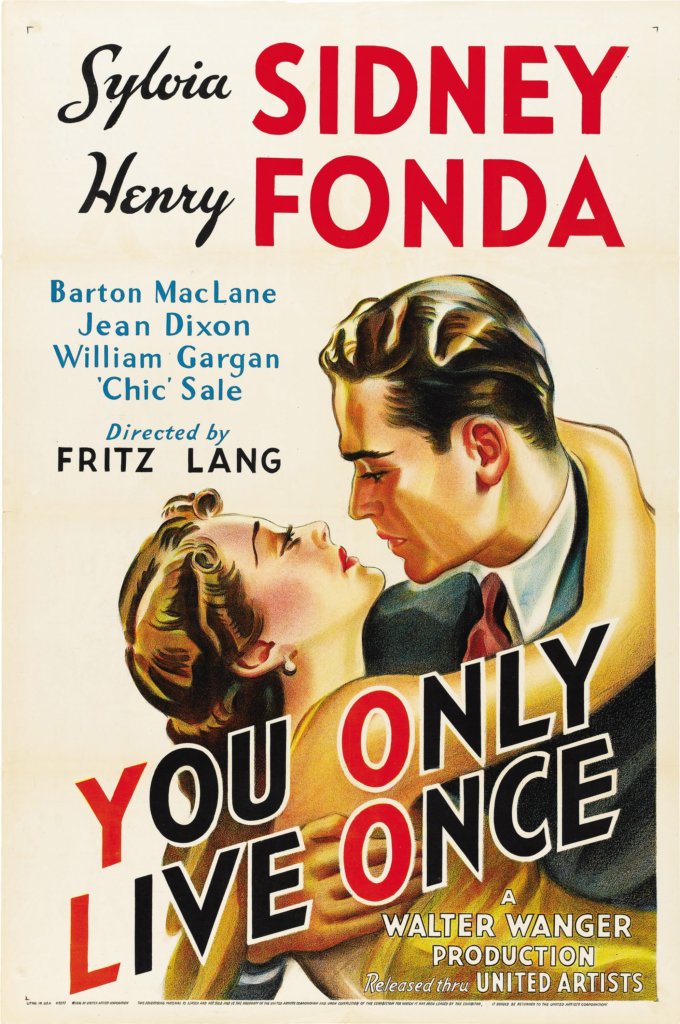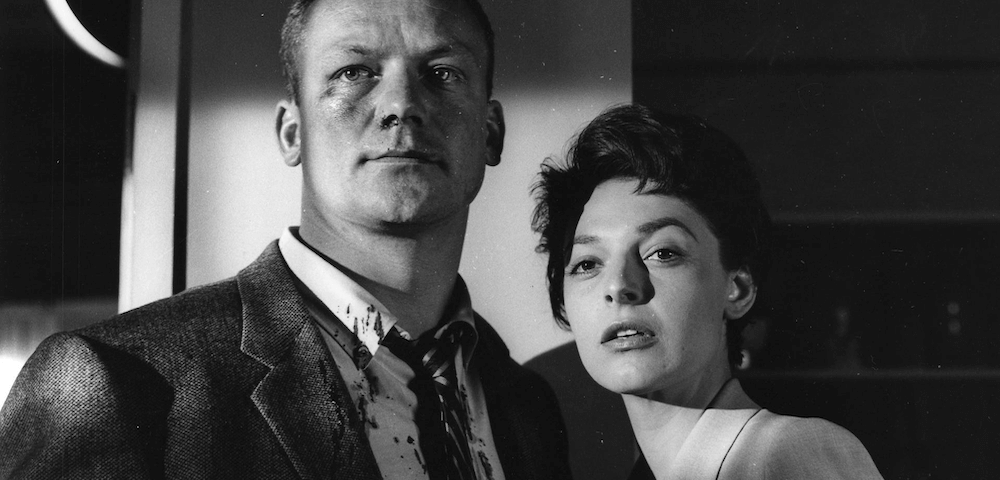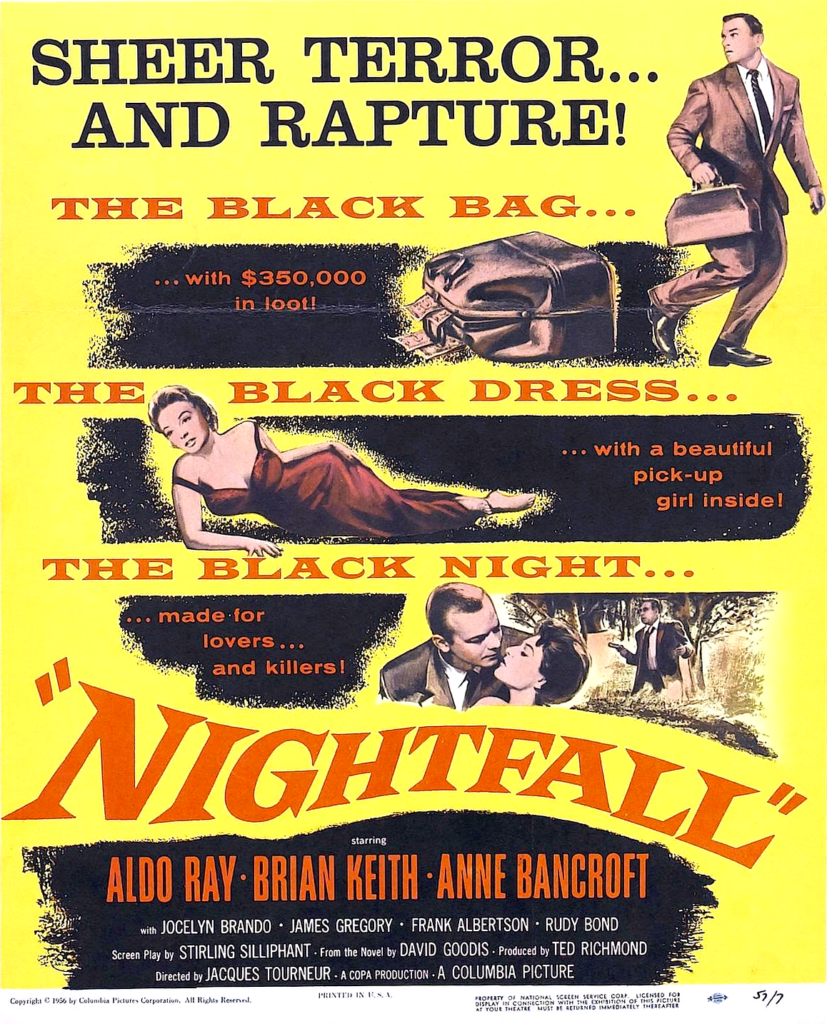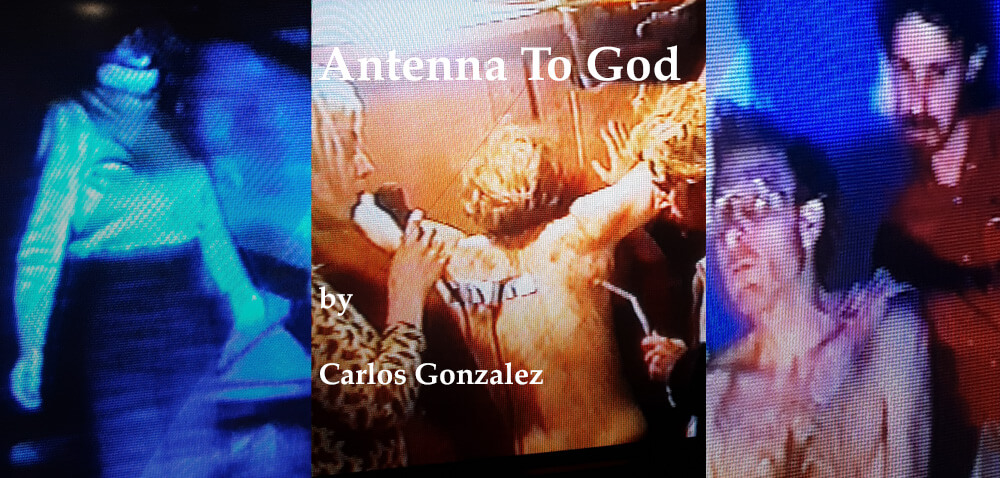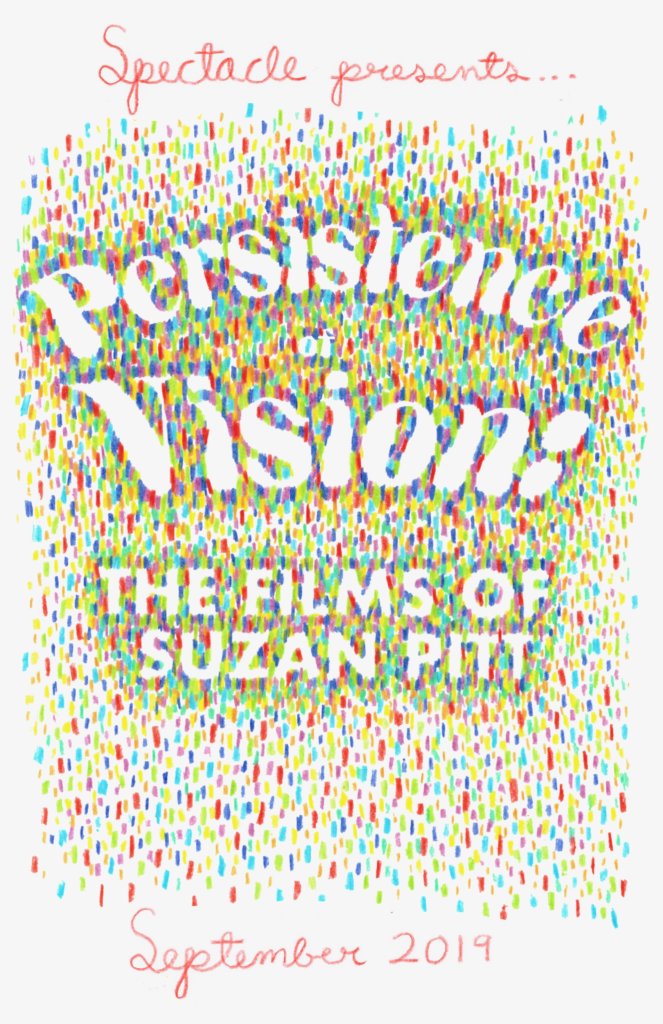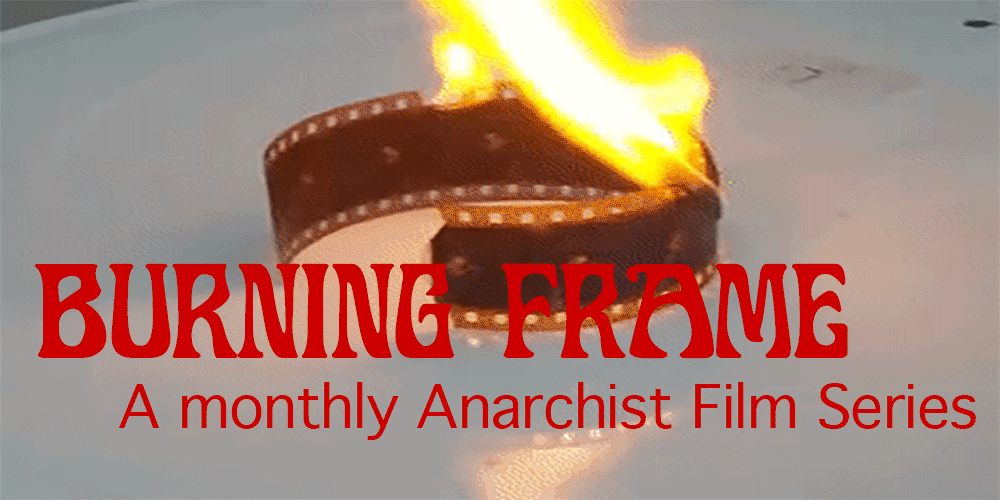
CALLING ALL LEFTISTS! The past few years have been a whirlwind: exhausting, invigorating, and ripe with potential. It’s tremendously difficult, when in the thick of it, to pause, reflect, or even find a moment to catch a breath. Especially when “it” refers to the rise of fascism on a global scale, with any number of future cataclysms hovering just over the horizon. But we digress.
Join us, then, for a series that asks: if not now, when? Come for great works of radical political filmmaking, stay for the generative discussions, or even just to gossip and gripe. The hope isthat this forum for authentic representations of successes, defeats, and the messy work of political action, will be thrilling, edifying, and maybe even inspire your next organizing project. To butcher the title of a great film for the sake of a moderately applicable pun: “Throw away your dogma, rally in the cinema.”
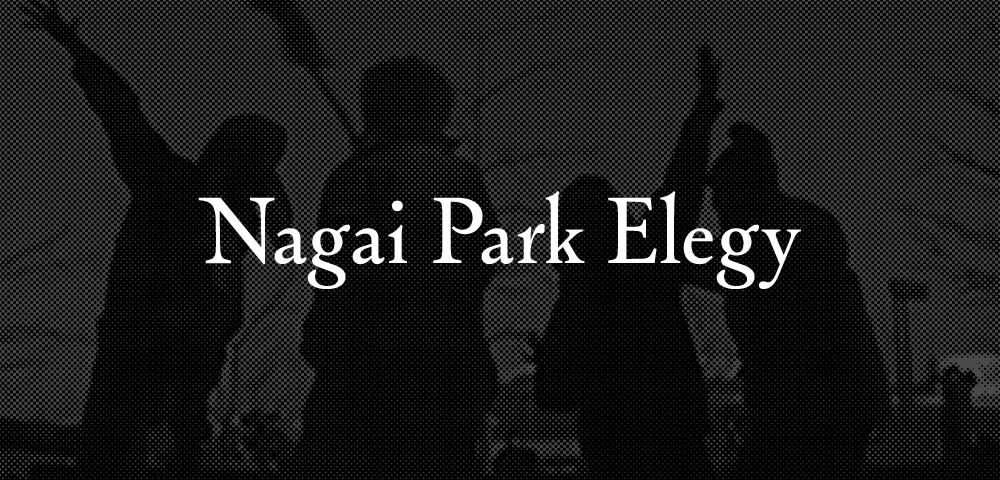 NAGAI PARK ELEGY
NAGAI PARK ELEGY
(長居青春酔夢歌)
dir. Leo Sato, 2009
69 mins. Japan.
In Japanese with English subtitles.
THURSDAY, SEPTEMBER 12 – 7:30 PM
ONE NIGHT ONLY!
“In 2006, the Osaka Municipal Government forcibly evicted two major tent villages, one in Utsubo Park and another in Osaka Castle Park. After having confronted with the riot police for defending the dwelling space, we were sadly realizing the impossibility of competing with the state power. Now the remaining village was only in Nagai Park. The dwellers and supporters of the village knew that they were doomed to be kicked out sooner or later. In the following winter of 2007, the people in the park staged a collaborative play, while their village was being attacked by the riot police. This was a festive choice in desperation. The director Sato was shooting this entire process. The present documentary is thus centered on the confrontation/play at Nagai Park.
During the 1990s, Japan’s real estate bubble dramatically burst. The day-laborers lost their jobs in construction and most of them turned to be homeless. On riverbeds and streets, in stations and parks, many large-scale tent villages appeared across Japan. There was a construction boom for a short period, after the Hanshin Earthquake of 1995, when jobs for day-laborers increased and homeless population decreased. But in the 2000s, tent villages returned everywhere in Osaka. The homeless people sought to sustain their reproduction by building tents, earn living by collecting cans and wastes, thereby organize their autonomous community. We, the outside supporters, went in their village, seeking to find a way of symbiosis.
Eventually we were evicted from Sagai Park as well. The loss affected our relations nurtured during the communal life-in-struggle. Being unable to create a new base, we were dispersed. Some of us were badly depressed in devastation. But in the summer of 2008, a riot broke out in Kamagsaki, the day-laborers’ ghetto in Osaka. It was locals’ response to the police brutality against a day-laborer. The event was a sheer surprise for most of us, because the locals had not rose up against the police since 1992. Though the police oppression was tough, we were nevertheless empowered. It provided the opportunity to connect the older dispossessed and the younger precariats in Osaka. It gave us who had been disseminated after the eviction an ideal occasion to reassemble. While shooting the riot, some of us organized a film production collective the Nakazaki-cho Documentary Space (NDS). Therefore, the documentary connects the struggle of underclass across Osaka’s urban space, from the tent village defense in the park to the inner-city riot.”
LETTER TO OUTSIDE FRIENDS FROM THE KAMAGASAKI COMMUNE:
We want to share our struggle with you, who are fighting against capitalism and the state, somewhere on the planet. We are seeking to make the labor center a space of our encounter and cohabitation. That is the most substantial objective of our present occupation.
On the evening of March 31st, we began occupying Airin Labor Welfare Center in Kamagasaki, Osaka. The humongous building was originally constructed in 1970 to provide the space for a large-scale labor market where construction companies could buy the labor power of day laborers on daily basis. After the construction boom was gone, the need for labor market has diminished and the building has gradually come to function as a common space for the workers and homeless people, being used communally for cooking, sleeping, hanging out, playing shogi, etc.
In the summer of 2018, closure of the building was announced by the Osaka Municipal Government. The building was to be demolished for new development. Expecting the eviction, various forms of protests were attempted by different groups. However, nobody had thought that a physical occupation was possible, until it actually happened on March 31st, the date scheduled for the closure. At the moment when the dear and necessary space fell under attack, a crowd emerged as so many bodies ready to physically defend it. The ensuing struggle manifests how this space had become a part of their lives.
The occupation has begun and continues. We have been observing much passion of left leaning academics to analyze why and how the occupation had taken place. We would say: if you need bread for your career, here it is, take it! But to be honest, ex post facto analyses do not help our occupation. What we need is to exchange and share the ideas and aspirations for what we want to create out of this occupation. Since the remarkable Sunday evening, when many bodies spontaneously gathered and rose up — beyond the divisions of activists vs. workers/homeless — our common passion has been to ask each other on our future orientation: what we want to do, how we want to do it, … It is the questionings that are presently rearranging the power of our struggle, as the impetus to go beyond the stagnant frameworks of day-laborers’ movement and homeless movement.
We would like you, our friends, to know that the occupied space has openness and uncertainty at the moment. Although the space is managed by us to welcome everyone, homeless people and neighbors, many of them are still standing-by, hesitating to join. Although increasing number of friends are visiting, the space is far from being a common place for the locals.
The power (or genius loci) of Kamagasaki is made by a hybridization of various types of people, who are essentially outsiders. The majority of residents are social outcasts (clerics, activists, criminals, day-laborers, performers, street vendors, miners, migrant peasants, prostitutes, transvestites, all kinds of losers, …), who originally come from somewhere else. It has been the place of radical struggles and periodic riots. But there has been no single ideology leading them. If there is anything that has led them, it is the power of cohabitation of those others who come from different backgrounds.
The hybrid power is manifest in various dimensions. For instance, the communal kitchen – one of the most crucial projects there — has been sustained twice a week (Tuesday and Saturday) in the autonomous space of Sankaku Park, since the 90s, by various individuals: Christians, day-laborers, park dwellers, organizers of homeless movement, leftist radicals, anarchists, citizen volunteers, … This project has been made possible by everyone’s gesture that is equally forged by persisting in everyday troubles, rather than by the efforts of selected few.
In the present occupation, the moment of cohabitation with all locals has not yet been discovered. But with the incompleteness, we intend to experiment a new arrangement of cohabitation. Especially, we would like you, our friends who are outsider to Kamagasaki, to bring something different to our common space shared by the present occupies, in order to create a new arrangement of cohabitation with those homeless people and neighbors, who are standing-by. It is high time to fully employ the hybrid power of outsiders/social outcasts as the genius loci of Kamagasaki.
The conventional premise of the leftist movement in Kamagasaki has been to postpone the end of workers’ autonomous space, tacitly taking for granted that it is destined to be lost sooner or later by the development. It is high time to go beyond this fatalism with a flavor of nostalgia. What is crucial for us now is to take this event as an opportunity to experiment a new social relation that would maximize the power of our struggle. As To Our Friends keenly said, while the subject of strike was the working class, the subject of occupation could be anyone, namely, the heterogenous and hybrid crowds.
Since the beginning of center’s crisis, young precariat like us have been engaged in the struggle leading to the occupation, in order to construct the base for a communal life of the dispossessed. Thereby we have been seeking to create a new form of life-as-struggle against the capitalist-nation-state on the everyday basis. This is an ongoing attempt to realize what we would want to share, which entails much unknown factors at the moment. But what we would want to realize is clear: to create a new village of the dispossessed within the mammoth building.
To begin with, we want to improve the present state of our living, where tens of us are surviving only with several tents installed on the small area covered with blue sheets, in the center’s huge floor. We want to make a kitchen with which we can cook for a hundred people. We want to become a power that makes possible a safe and comfortable cohabitation for all genders. We want to organize the openness and uncertainty as flexible as possible, so that everyone of us can attempt to create what we all share in their own ways. We want to stop representing the oppressed by professing to be supporters/activists, and instead, nurture the power together with the locals through our common struggle. We want to think together with you all what this struggle can achieve, beyond our intention.
We call to all friends who are passionate to participate in this occupation: the success of this struggle is not in sustaining the occupation forever. We are well aware of the fact that we could be evicted by the police anytime. Our objective is not to beat them. It is a sheer impossibility today. It is not only impossible, but also undesirable. What we want to have is not the power rivaling the power that the state conceives. What we want is a totally different power, namely, the power of association that creates an yet unknown arrangement of planetary struggle against the capitalist-nation-state, by connecting our attempt for a new cohabitation of the dispossessed in Kamagasaki with the struggles of our friends outside Kamagasaki. We believe that today’s revolutionary potency exists in the power nurtured by the encounter among the struggles across the planet.
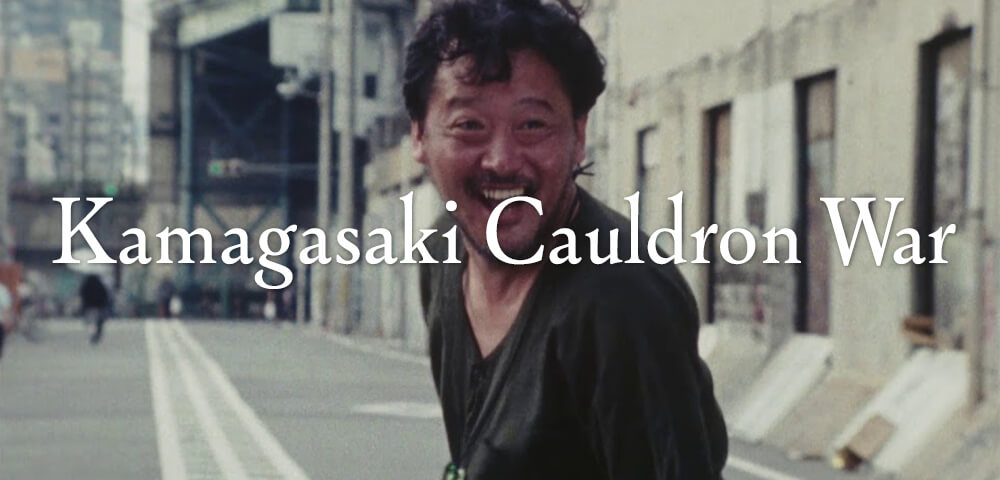
KAMAGASKI CAULDRON WAR
(月夜釜合戦)
dir. Leo Sato, 2018
115 mins. Japan.
In Japanese with English subtitles.
MONDAY, SEPTEMBER 23 – 7:30 PM
ONE NIGHT ONLY!
Kamagasaki is the town of day-laborers, homeless and social outcasts in Osaka Japan. Along with another urban ghetto, Sanya in Tokyo, the town saw periodic riots — even after the age of uprisings in the 60s — whose last manifestation was in the summer of 2008 during the G8 Summit. The town embodies all aspects of otherness to the country known for its near completion of social control and consumerist paradise.
During the economic growth, the resident workers were made to provide their blood and tears for massive developments, while excluded from nation’s civil society. After the construction boom dwindled, the town was disinvested and the impetus of all activities declined, but the exclusionary status has sustained, while the majority of residents have turned to be homeless. Today the area is the target of gentrification and the spaces of autonomy that the residents had achieved by their long-time struggles are being evicted one after another.
The town has been a center of political activism. The activists of liberal inclination work for welfare projects designed to domesticate homeless population, mostly, in collaboration with the government. Certain artists are mobilized to make the town look neater and more accessible to the general public. Labor organizers of different veins have long been working with the residents in the framework of their political organizations. Left leaning academics (mostly urban theorists) passionately study the history of labor militancy as well as the recent development of gentrification. And finally, young precariats (including those with anti-capitalist convictions) seek to create a cohabitation space with the older day-laborers and homeless by developing new autonomous zones. During the past two years, the annual gathering of Living Assembly was hosted by the community there.
On the evening of March 31st 2019, the residents of Kamagasaki began occupying the local labor center. This was the date scheduled by the Osaka municipal government for the center’s closure, in order to demolish it for a new development. At the moment when the existence of the center — dear and necessary in the minds of so many — fell under attack, a crowd emerged as so many bodies ready to physically defend it. The ensuing struggle manifests how the space itself had become a part of their lives.
Though originally constructed in 1970 as a massive labor marketplace where construction companies could buy the labor power of day laborers, the building had since come to function as a common space for the workers and homeless people, used communally for cooking, sleeping, hanging out, playing shogi, etc.
The occupation ended within twenty-four days. But the short-lived event broke the ice of powerlessness that had long been affecting the entirety of Japan, and opened a potency for the unknown. What was happening inside the occupied space was remarkable. It was an experimentation of cohabitation between the young and old dispossessed, outside the consumerist society. When the spring wind turned cold, heaters were brought in; when their stomachs got empty, a community kitchen was organized; when the night grew long, bedding was collected. The occupiers organized general assembly for sharing the prospect of occupation. They held various discussions for all decision-makings. They built a library. They invited authors to give talks. They had film screenings. Music concerts took place. Many outside friends in and out of Japan visited for support (…) These are manifestations of real capacity for a communal life in happiness, deriving from the power nurtured by the worker/homeless through their lives-as-struggle, that was reawoken by the new encounter between the older residents of Kamagasaki, young newcomers as well as friends from outside. The event created relations beyond the previously dominant duality between the activist (as savior) and the day-laborer/homeless (as victim); it surpassed the phase of leftists’ passive immersion in the nostalgia of good old days of labor militancy. The event created a new body of communal life-as-struggle.
This body is now charged with a question, that is shared universally among all of us living under the endless drive of capitalist/state mode of development. If every autonomous zone we create is destined to perish by violence, sooner or later, at some point in future, how can the autonomous zone and the communal relations nurtured therein sustain themselves and grow further? Is it possibly by creating a certain mobile form and synchronicity with others?
This film’s story takes place in various Kamagasaki locales, unfolding in the shadow of what its characters refer to simply as “Abeno.” This is the high-rise complex Abeno Harukas, Japan’s tallest building and the epitome of reckless development. Today, powerful and vested interests threaten to displace the old Kamagasaki dwellers and destroy the forms of life they created outside of civil society. The film maps this ongoing gentrification through the perspectives of a diverse cast of characters, representative of Kamagasaki’s real inhabitants: there are day laborers, prostitutes, homeless, a pickpocket, a street performer, a blind masseur, an orphan, a political activist and a priest. There is also a yakuza family called the Kamatari Gang who rule underground businesses, including the red light district Tobita Ukaku. Like real-life yakuza, the Kamatari regularly collaborate with the police and with developers. When the Kamatari’s prized possession — a kama emblazoned with the family emblem, used in pledging ceremonies — is stolen by a wandering performer, a great melee ensues, embroiling gangsters fighting for prestige, locals looking to make a few bucks, workers/homeless protecting their symbol of survival, and bystanders who can’t help but get involved. The countless kama being circulated around only complicate the situation, and confrontations multiply…
The cast includes only a few established actors. The majority of the characters are played by friends of the production team, and real people living in Kamagasaki. The film was shot in 16mm in attempt to capture the special atmosphere of Kamagasaki, its smells and its aura, as well as people’s breath and heartbeat. All in all, the real subject of the film is the town of Kamagasaki itself.
In the process of the film’s distribution, however, a conflict arose, between those who prioritize screening in political communities across the world and those who cherish major distribution, especially in national and international film festivals. This conflict is so idiotic, since there is no reason that these two stances have to oppose each other. On the other hand, however, in the context of Japan it embodies a recurrence of the important debate that surfaced in the late 60s among revolutionary film makers, between the film of movement (collectivity) or the film of author (director).
The production of KAMASAGAKI: THE CAULDRON WAR was made possible by the collaborative relations nurtured in the Nakazaki-cho Documentary Space (NDS), where all members contribute to making films directed by other members. This assumes a de-hierarchized collaboration among all, wherein all are directors and production assistants at the same time. But after the production ended, the drive for success in the capitalist mode of film making has come to dominate and a group led by the producer has come to monopolize the object and means of distribution. Meanwhile, another group persists in guerrilla screening across the world, focusing on small enclaves of radicals. It goes without saying that this screening is part of the latter.
All texts written by Living Assembly.
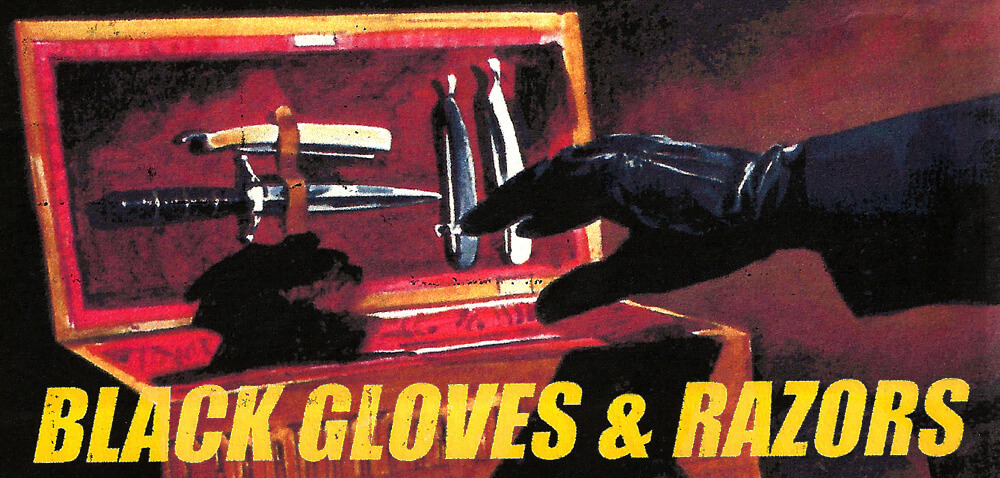


 NAGAI PARK ELEGY
NAGAI PARK ELEGY
